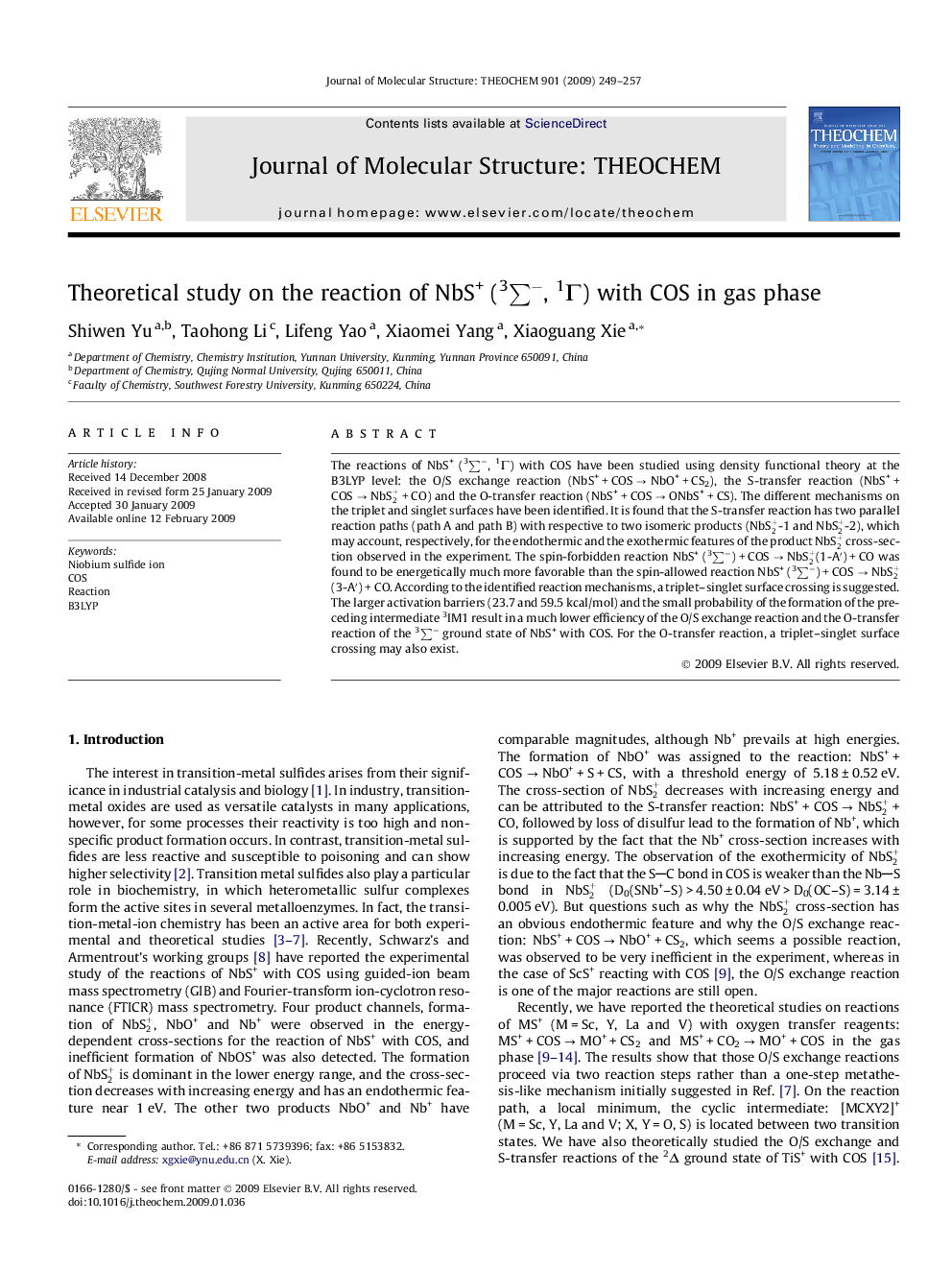| Article ID | Journal | Published Year | Pages | File Type |
|---|---|---|---|---|
| 5416837 | Journal of Molecular Structure: THEOCHEM | 2009 | 9 Pages |
Abstract
The reactions of NbS+ (3ââ, 1Î) with COS have been studied using density functional theory at the B3LYP level: the O/S exchange reaction (NbS+ + COS â NbO+ + CS2), the S-transfer reaction (NbS+ + COS â NbS2+ + CO) and the O-transfer reaction (NbS+ + COS â ONbS+ + CS). The different mechanisms on the triplet and singlet surfaces have been identified. It is found that the S-transfer reaction has two parallel reaction paths (path A and path B) with respective to two isomeric products (NbS2+-1 and NbS2+-2), which may account, respectively, for the endothermic and the exothermic features of the product NbS2+ cross-section observed in the experiment. The spin-forbidden reaction NbS+ (3ââ) + COS â NbS2+(1-Aâ²) + CO was found to be energetically much more favorable than the spin-allowed reaction NbS+ (3ââ) + COS â NbS2+ (3-Aâ²) + CO. According to the identified reaction mechanisms, a triplet-singlet surface crossing is suggested. The larger activation barriers (23.7 and 59.5 kcal/mol) and the small probability of the formation of the preceding intermediate 3IM1 result in a much lower efficiency of the O/S exchange reaction and the O-transfer reaction of the 3ââ ground state of NbS+ with COS. For the O-transfer reaction, a triplet-singlet surface crossing may also exist.
Related Topics
Physical Sciences and Engineering
Chemistry
Physical and Theoretical Chemistry
Authors
Shiwen Yu, Taohong Li, Lifeng Yao, Xiaomei Yang, Xiaoguang Xie,
